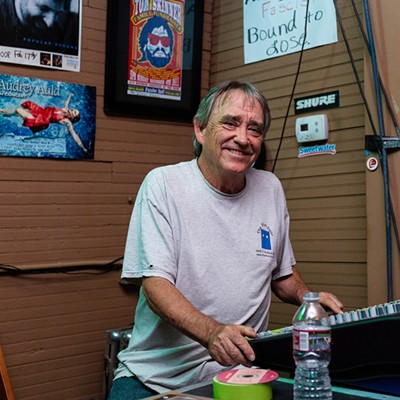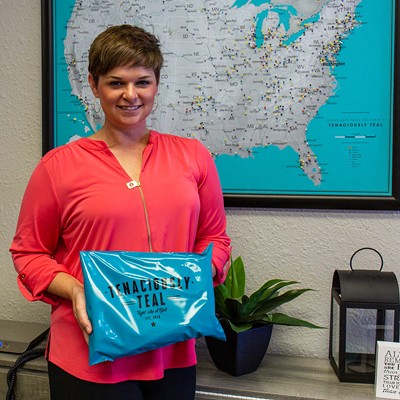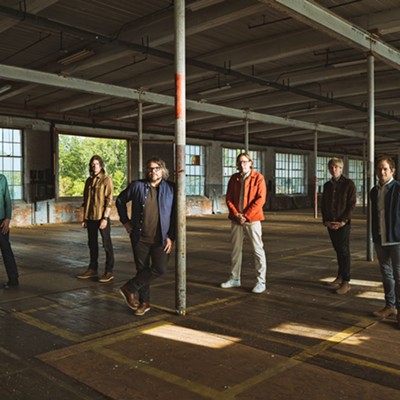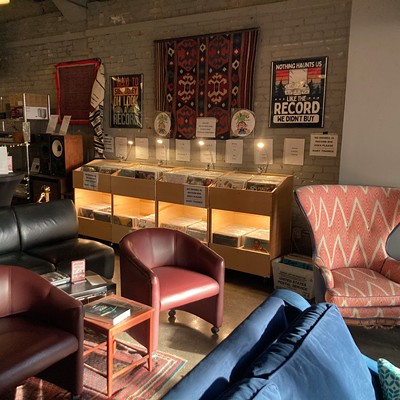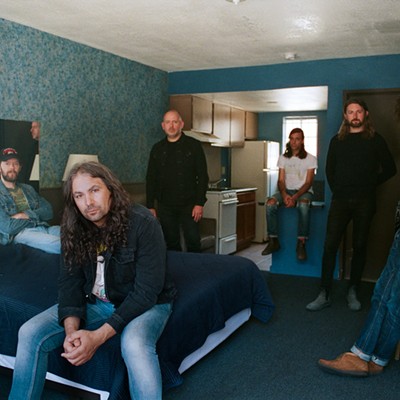The hype has yet to become a eulogy for any medium. The latest chapter in the saga pits traditional terrestrial radio against online radio, and metro broadcasters have cast their bets on both sides.
Listener-supported KOKF-FM 90.9 — aka 91 FM — lived on the knob from 1985 to 2006, when national brand Air1 Radio bought the Christian-music station. But last Halloween found 91 FM resurrected as 91 Online at 91online.com.
“Launch night, we had over a thousand people listening, from 7 p.m. to 2 a.m.,” said Rachael Jamison, operations manager for the station.
It was almost a perfect reboot, as the entire staff from the ’06 shutdown returned as volunteers to create and run the streaming version.
“With the low cost of Internet radio, we could start up,” Jamison said. “It’s not as convenient as being on the FM dial, but we can reach a broader segment (of listeners).”
In addition to regaining a local audience, the station has found listen ers worldwide, as far away as the UK and New Zealand.
NEW VOICES
Voices of Oklahoma, which is set to start streaming in the next few weeks at KVOY-89.7 FM, isn’t looking for international listeners. The noncommercial station is focused entirely on community.
“Community news, community issues, community music. There’s a lot of local stuff,” said Mary Francis, president. She heads a local group that includes Shawnee’s Michael Dodson as news director and The Blue Door owner Greg Johnson, who will run a show about music and politics.
While the programming will stream on KVOY.org, the station has its sights primarily set on not one, but three building permits: Cordell, Wynnewood and Oklahoma City. That outlook is a long one, as it hasn’t received any of the building permits yet; once the documents are secured, the FCC will grant three years to build a station before the group loses the frequency back to the agency. Building three stations will take money, but the group has already succeeded in getting grants, raising individual pledges and conducting fundraisers, such as Johnson’s July 12 tribute concert to Red Dirt musician Bob Childers.
Still, it’s a challenge to get a new terrestrial radio station going, even one that will be staffed by volunteers and run as a nonprofit. It’s not an entirely unsustainable model; Francis mentioned success stories like KFAI-FM 90.3 in Minneapolis and KBOO-FM 90.7 in Portland, which each have between 350 and 400 volunteers.
“We’re expecting a lot of volunteers,” Francis said.
But even if a small army of people work for nothing, it’s an uphill battle to fund a station.
“Not being on the air is a handicap to raising funds,” she said. “The big change will come when we actually start broadcasting, but streaming will help.”
STILL SPYING
Ferris O’Brien knows all too well about such costs.
“As
one of my friends said, ‘Terrestrial radio is dinosaur technology.’
It’s expensive to run, it’s expensive to maintain,” said O’Brien, owner
of The Spy. Last December, The Spy abruptly went from the airwaves at
KSPI-FM 105.3 to online-only at TheSpyFM. com due to a sale of the
station that didn’t take.
Half a year later, he doesn’t see it as a huge loss.
“There still is a sexiness about FM, but I think it’s going away,” O’Brien said.
He’s pretty sure that the X/Y shift is real, and that Internet radio will replace the terrestrial kind.
“The
future of radio does live online. We’re ahead of the curve,” he said,
noting that the acceleration of technology in cars will facilitate that
fall in “about two years.”
“With
everyone having a smartphone, it’s as easy as having an app,” O’Brien
said. He specifically mentioned the TuneIn Radio app, available for
iPhone and Android. It features streams of more than 50,000 stations.
With a $30 adapter, a smartphone becomes an avenue to any radio station
for any interest at any time.
“Anyone
who’s still listening to terrestrial radio is doing so because they
don’t know any better or laziness,” he said. “Our terrestrial stations
here are done, just because of the choice that is out there. I don’t
think (people) are aware of the hundreds of better ones in other
terrestrial markets, and thousands of better ones on the Internet. It’s
ridiculous to think that a local, badly planned station can survive
that.”
O’Brien believes it will get even simpler, and cars will soon have Wi-Fi radio built-in.
“As soon as that one extra step gets taken out, you can start believing people who say that it’s dead,” he said.
Jamison
agreed. “The technology hasn’t caught up, because it’s not the easiest
to listen to Internet radio in cars. We believe it will, though,” she
said.
In contrast to O’Brien’s steadfast stance, Jamison has a more ambivalent outlook on any potential return to the airwaves.
“If we don’t, then we don’t.
We
want to focus and not belittle the fact that we’re online,” she said.
“Online is a very convenient way to start. It has a lot of benefits.”


